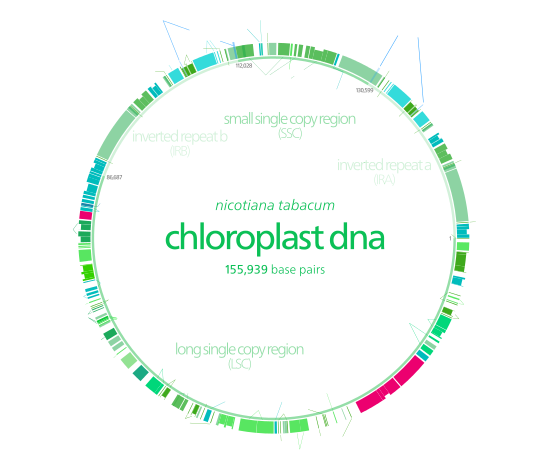
Back خارطة جينية Arabic Mapiranje gena BS Cartografia genètica Catalan Genkarte German Cartografía genética Spanish نگاشت ژن Persian Geenikartta Finnish Cartographie génétique French Kartiranje gena Croatian Géntérkép Hungarian


Gene mapping or genome mapping describes the methods used to identify the location of a gene on a chromosome and the distances between genes.[2][3] Gene mapping can also describe the distances between different sites within a gene.
The essence of all genome mapping is to place a collection of molecular markers onto their respective positions on the genome. Molecular markers come in all forms. Genes can be viewed as one special type of genetic markers in the construction of genome maps, and mapped the same way as any other markers. In some areas of study, gene mapping contributes to the creation of new recombinants within an organism.[4]
Gene maps help describe the spatial arrangement of genes on a chromosome. Genes are designated to a specific location on a chromosome known as the locus and can be used as molecular markers to find the distance between other genes on a chromosome. Maps provide researchers with the opportunity to predict the inheritance patterns of specific traits, which can eventually lead to a better understanding of disease-linked traits.[5]
The genetic basis to gene maps is to provide an outline that can potentially help researchers carry out DNA sequencing. A gene map helps point out the relative positions of genes and allows researchers to locate regions of interest in the genome. Genes can then be identified quickly and sequenced quickly.[6]
Two approaches to generating gene maps (gene mapping) include physical mapping and genetic mapping. Physical mapping utilizes molecular biology techniques to inspect chromosomes. These techniques consequently allow researchers to observe chromosomes directly so that a map may be constructed with relative gene positions. Genetic mapping on the other hand uses genetic techniques to indirectly find association between genes. Techniques can include cross-breeding (hybrid) experiments and examining pedigrees. These technique allow for maps to be constructed so that relative positions of genes and other important sequences can be analyzed.[6]
- ^ Mader S (2007). Biology (Ninth ed.). New York: McGraw-Hill. p. 209. ISBN 978-0-07-325839-3.
- ^ "Gene mapping - Glossary Entry". Genetics Home Reference]. Bethesda, MD: Lister Hill National Center for Biomedical Communications, an Intramural Research Division of the U.S. National Library of Medicine. 2013-09-03. Retrieved 2013-09-06.
- ^ "Mapping". Genome.gov. Retrieved 3 May 2023.
- ^ Ladejobi O, Elderfield J, Gardner KA, Gaynor RC, Hickey J, Hibberd JM, et al. (December 2016). "Maximizing the potential of multi-parental crop populations". Applied & Translational Genomics. 11: 9–17. doi:10.1016/j.atg.2016.10.002. PMC 5167364. PMID 28018845.
- ^ Nussbaum, Robert L.; McInnes, Roderick R.; Wilard, Huntington F. (2016). Thompson & Thompson Genetics in Medicine (Eighth ed.). Philadelphia, PA: Elsevier. pp. 178–187. ISBN 978-1-4377-0696-3. Archived from the original on 4 March 2016. Retrieved 13 October 2015.
- ^ a b Brown, Terence, A. (2002). Genomes. Manchester, UK: Garland Science. ISBN 0-471-25046-5.
{{cite book}}: CS1 maint: multiple names: authors list (link)